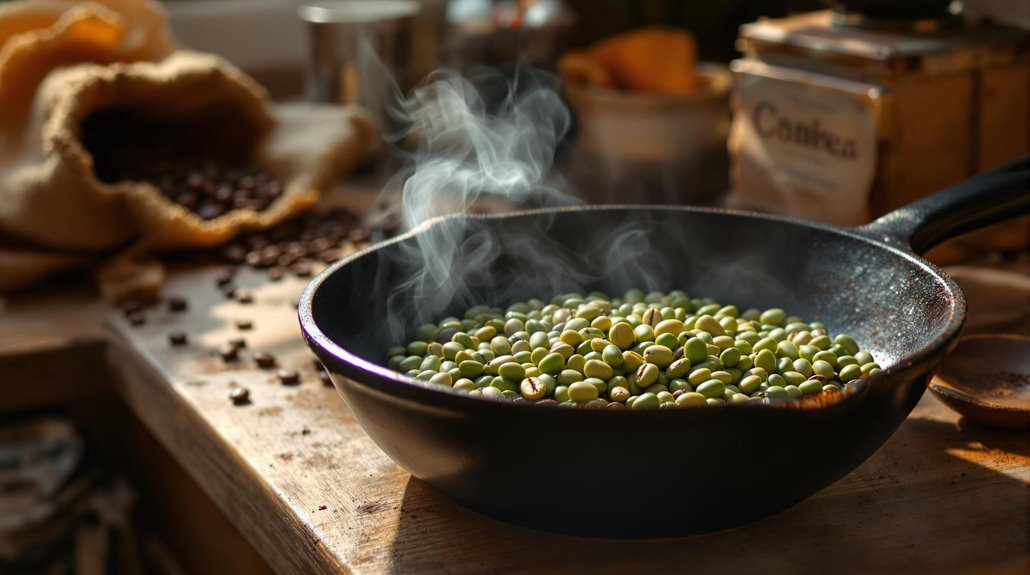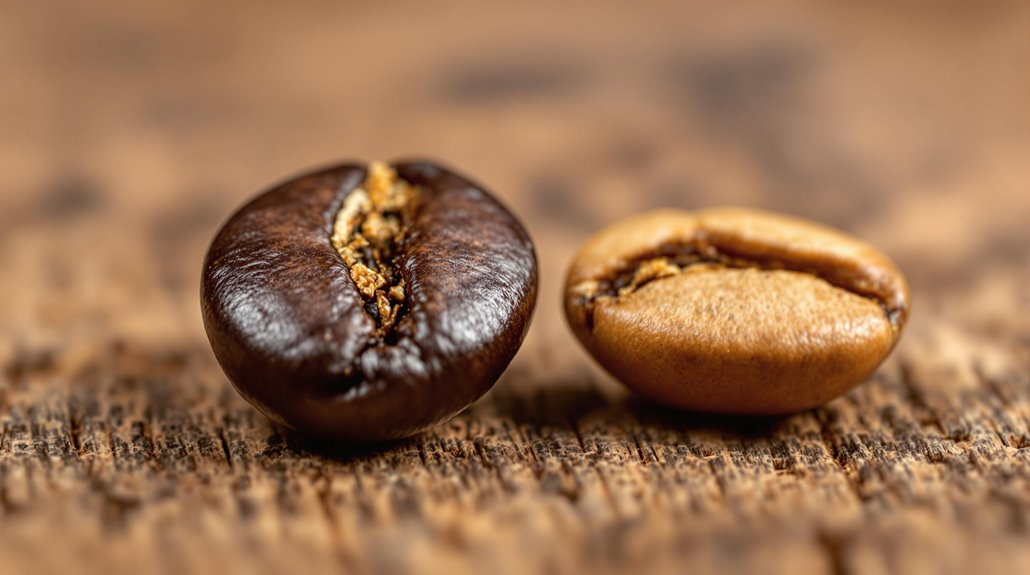





Over 60% of coffee drinkers say flavor is the most important factor when choosing beans, but how do you guarantee you're picking the right ones? Your brewing method, preferred taste profile, and even ethical considerations play a role in narrowing down the options. Single-origin beans might offer unique regional notes, while blends provide consistency. Roast levels—light, medium, or dark—impact acidity and intensity, and freshness can make or break your cup. But what about processing methods or certifications? The choices can feel overwhelming, yet understanding these factors could transform your morning ritual into something extraordinary.
Key Takeaways
- Choose Arabica beans for sweet, delicate flavors or Robusta for bold, high-caffeine options.
- Opt for single-origin beans to explore unique regional flavors or blends for balanced consistency.
- Select roast levels based on preference: light for bright acidity, medium for balance, or dark for bold, smoky notes.
- Prioritize freshness by choosing beans roasted within 7 to 21 days and consider processing methods for flavor profiles.
- Support ethical practices like Fair Trade, organic, or shade-grown coffee for sustainability and quality.
Understanding Coffee Bean Varietals
Understanding coffee bean varietals is key to appreciating the nuances of your brew. The two primary types of coffee beans you'll encounter are Arabica and Robusta, each offering distinct flavor profiles and characteristics. Arabica beans, which dominate global production, are prized for their sweet, delicate flavors and are often grown at higher elevations. Varieties like Bourbon, Blue Mountain, and Yirgacheffe showcase unique notes ranging from fruity and floral to wine-like, making Arabica coffee a favorite among specialty coffee enthusiasts. On the other hand, Robusta beans contain nearly twice the caffeine of Arabica, delivering a strong, bitter, and earthy taste. They thrive in warmer climates and lower altitudes, making them a hardy choice for growers. When choosing your coffee, consider the type of bean and its origin. African coffee beans, such as Ethiopian or Kenyan, often feature bright, floral, and berry-like flavors, while Central American beans, like those from Costa Rica or Guatemala, tend to be smooth, nutty, and slightly fruity. By exploring different types of coffee and their unique profiles, you'll deepen your understanding of the coffee plant and its diverse varieties.
Single Origin Vs Blends: Flavor Differences

Exploring the differences between single-origin coffee and blends reveals how each offers distinct flavor experiences shaped by their origins and composition. Single-origin coffee comes from one specific region, allowing you to taste the unique flavors influenced by its regional terroir. For example, Ethiopian Harrar often delivers fruity, wine-like notes, while Tanzanian Peaberry boasts bright acidity and citrus undertones. These beans are typically 100% Arabica, emphasizing purity and the distinct characteristics of their origin. If you're a coffee enthusiast seeking to explore unique flavors, single-origin coffee is your go-to.
Blends, on the other hand, combine beans from multiple regions to create a balanced taste. They often mix 90% Arabica with 10% Robusta, adding body and caffeine while maintaining a harmonious flavor profile. Blends are designed for consistency, making them ideal for various brewing methods and those who prefer a reliable, well-rounded cup. Whether you're drawn to the regional specificity of single-origin coffee or the versatile, balanced taste of blends, your choice depends on whether you prioritize unique flavors or a consistent flavor experience.
Selecting the Right Roast Level
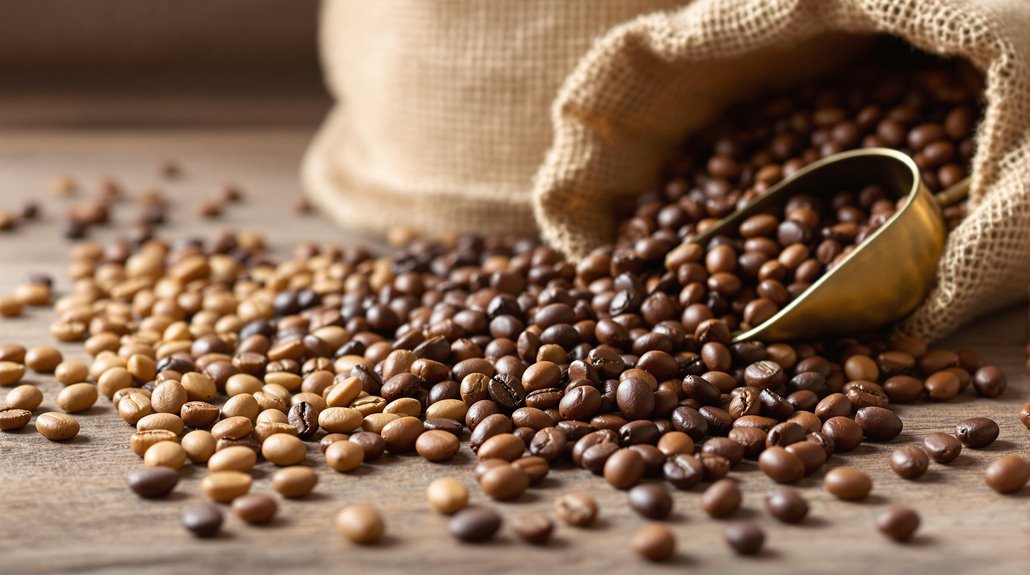
When selecting coffee beans, the roast level plays a pivotal role in shaping the flavor profile of your brew, as it determines how much of the bean's natural characteristics are preserved or transformed. Light roast beans retain the highest caffeine content and showcase origin-specific characteristics, offering bright acidity and fruity or floral undertones. They're ideal for brewing methods like pour-over, which highlight their nuanced flavors. Medium roast beans strike a balance, with moderate acidity, sweetness, and a well-rounded flavor that adapts to various brewing methods, from drip coffee to AeroPress. Dark roast beans, on the other hand, emphasize bold notes like smokiness or caramelization, with lower acidity and caffeine content. These are perfect for espresso or French press, where their robust, intense flavors shine. Your choice of roast level should align with your taste preferences and brewing method—lighter roasts for complexity and brightness, medium roasts for versatility, and dark roasts for rich, bold experiences. Understanding these distinctions guarantees you'll select the right roast to match your desired flavor and brewing style.
Importance of Freshness and Processing Methods
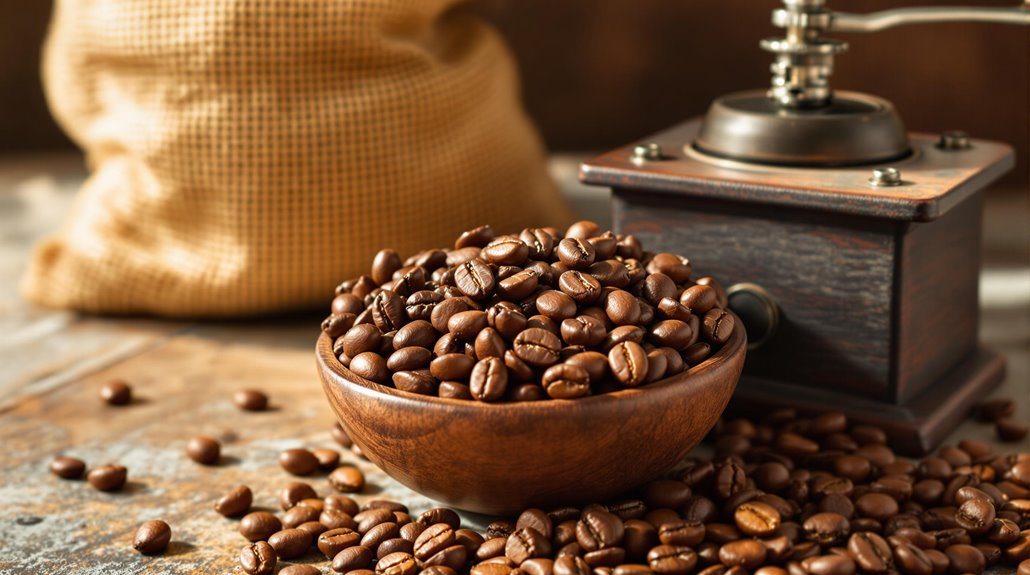
Freshness and processing methods are at the heart of what makes your coffee taste exceptional, shaping its flavor, aroma, and overall quality. Always check the roast date on your coffee packaging, as freshness peaks within 7 to 21 days after roasting—the ideal brewing window. Beyond this period, flavors degrade, and the coffee loses its vibrancy. Processing methods also play a critical role in defining your cup's profile. Natural processed beans, dried with the fruit intact, deliver sweeter, fruitier flavors and lower acidity. Washed processed beans, stripped of their fruit pulp before drying, offer cleaner, brighter notes with pronounced acidity. Semi-washed or wet-hulled processing, often used in Sumatran coffees, creates rich, earthy flavors with a distinctive sweetness. Honey processed beans, a hybrid method, retain some fruit mucilage during drying, resulting in sweeter, complex flavors with balanced acidity. Each method influences the bean's inherent characteristics, so understanding these differences helps you align your preferences with the right processing style. Prioritize freshness and choose beans processed in a way that complements your desired flavor profile for the best brewing experience.
Ethical and Sustainable Coffee Choices
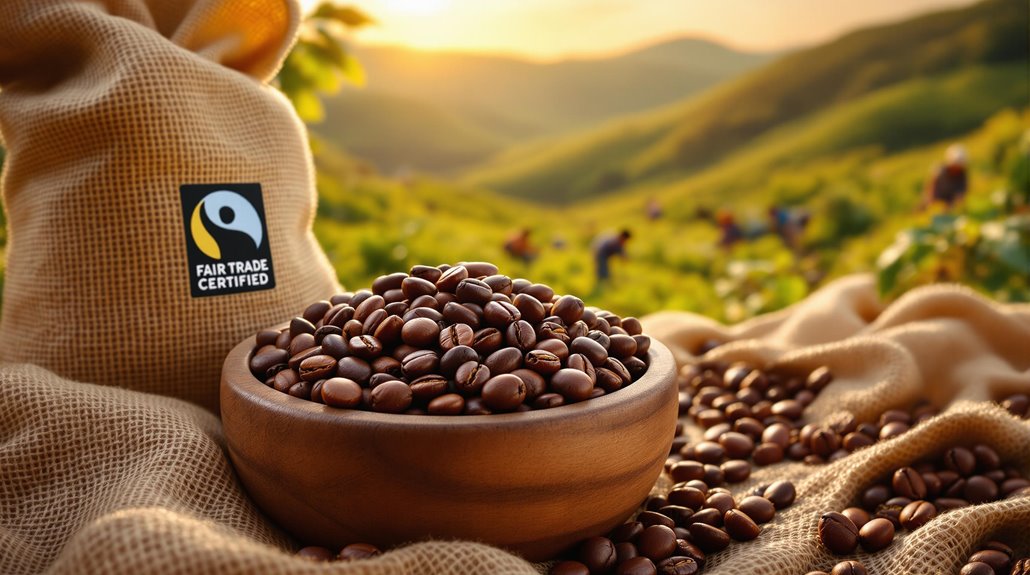
Ethical and sustainable coffee choices not only enhance your morning brew but also contribute to a healthier planet and fairer livelihoods for farmers. Start by seeking out Fair Trade certification, which guarantees farmers receive fair wages and work under ethical conditions. This certification secures transparency and supports communities by promoting sustainable farming practices. Opt for organic coffee to avoid synthetic pesticides and herbicides, which harm ecosystems and farmworkers. Organic coffee aligns with eco-friendly principles, reducing environmental impact while preserving soil health. Shade-grown coffee is another excellent choice, as it promotes biodiversity by allowing coffee plants to grow under natural tree canopies, reducing deforestation and supporting wildlife habitats. Direct trade brands are worth exploring, as they build direct relationships with farmers, guaranteeing higher quality beans and fairer prices. This approach fosters transparency and strengthens ethical practices throughout the supply chain. Avoid coffee linked to unethical practices, such as Kopi Luwak, which exploits animals. By prioritizing these ethical and sustainable options, you're not just enjoying a better cup—you're supporting farmers and protecting the planet.
Disclosure: As an Amazon Associate, I earn from qualifying purchases.

